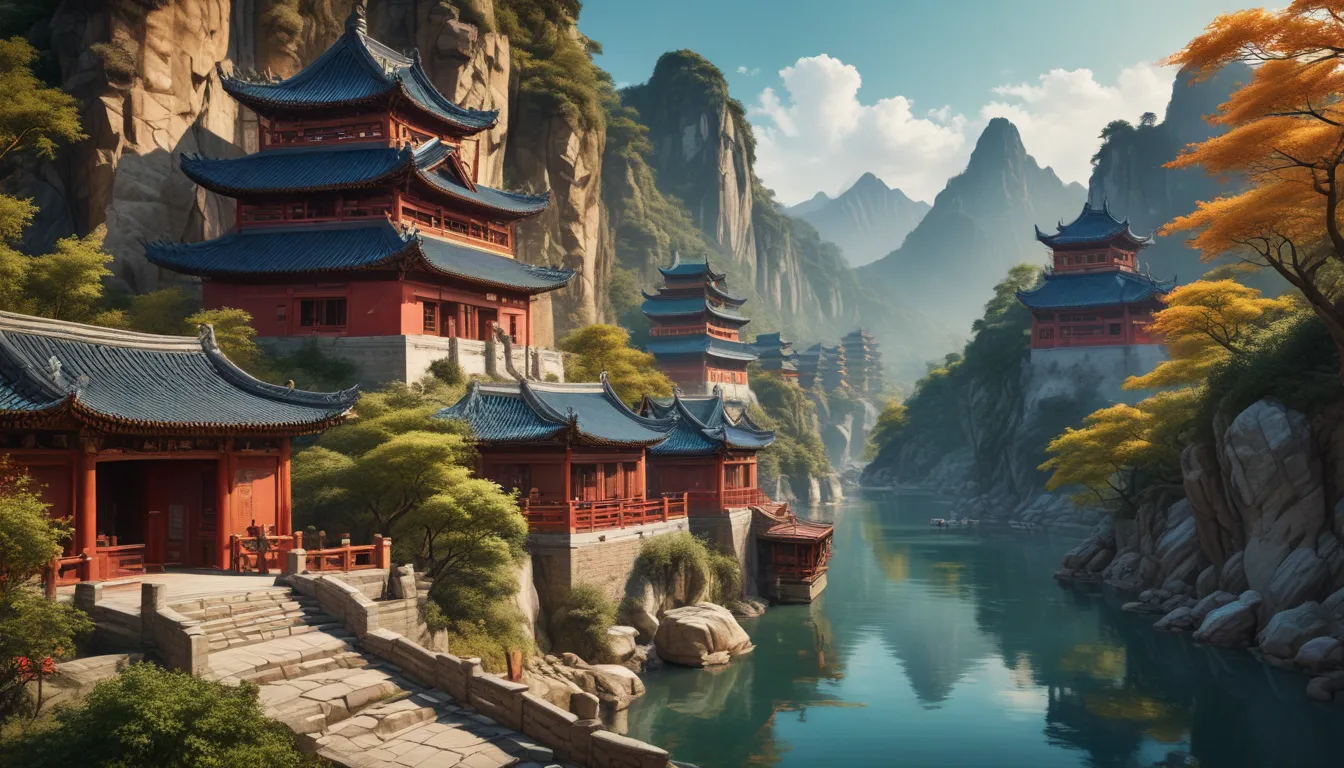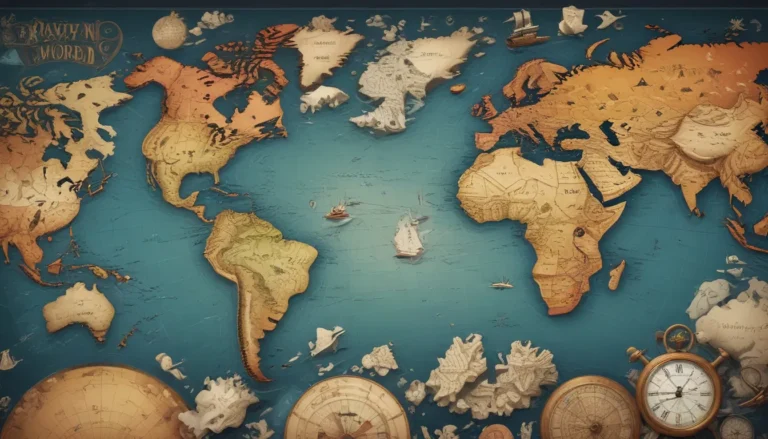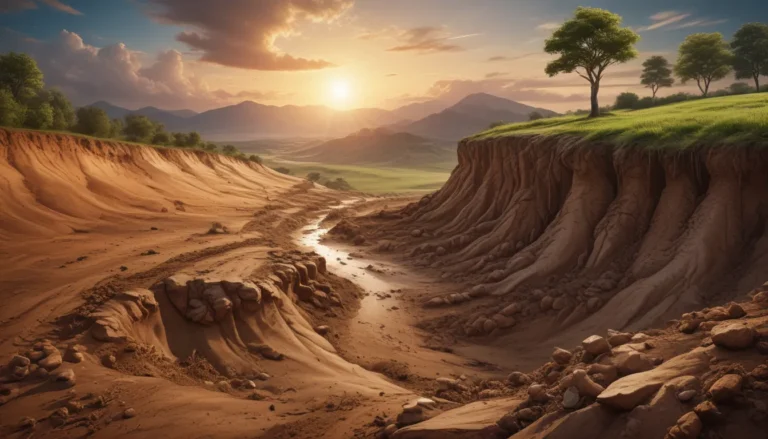A Note About Images: The images used in our articles are for illustration purposes only and may not exactly match the content. They are meant to engage readers, but the text should be relied upon for accurate information.
Welcome to a journey through the breathtaking landscapes and captivating geography of China, a country of unparalleled diversity and rich history. As we delve into the 24 intriguing facts that define China’s geography, we will uncover the unique blend of natural wonders and cultural significance that make this East Asian giant truly special. Whether you’re a geography enthusiast, a curious explorer, or a student eager to learn, these facts will offer a deeper insight into what makes China’s geography so influential on a global scale.
China’s Diverse Landscape: An Overview
China, with its vast expanse and varied terrain, is a land of contrasts, boasting everything from towering mountains to fertile plains. Let’s explore some key facts about China’s landscape and geography:
- China covers approximately 9.6 million square kilometers, ranking as the fourth-largest country globally.
- Home to the majestic Himalayas, China is home to Mount Everest, the highest peak on Earth at 8,848 meters above sea level.
Embracing the Diversity of Chinese Climates
China’s vast landmass gives rise to a diverse range of climates, influencing everything from agriculture to lifestyle across different regions. Here are some interesting facts about China’s climate:
- From the frigid winters of Harbin in the north to the tropical climate of Hainan in the south, China’s climate varies significantly.
- The country’s precipitation patterns vary widely, with some regions receiving over 1,500 mm of rain annually, while others experience arid conditions with less than 50 mm of rainfall.
Rivers: The Lifelines of Chinese Civilization
Rivers have played a monumental role in shaping China’s history, culture, and economy. Let’s explore some fascinating facts about China’s major rivers:
- The Yangtze River, Asia’s longest river, spans over 6,300 kilometers and is a vital artery of Chinese civilization.
- The Yellow River, known as the “Mother River” of China, has a length of approximately 5,464 kilometers and has been both a source of life and devastation throughout Chinese history.
Ecosystems and Natural Resources: China’s Ecological Riches
China’s diverse landscapes support a wealth of ecosystems, from dense forests to vast deserts, each harboring unique flora and fauna. Here are some noteworthy facts about China’s biodiversity:
- With over 34,687 species of animals and vascular plants, China is one of the most biodiverse countries on the planet.
- The giant panda, an iconic symbol of conservation efforts, calls China’s forests home, highlighting the country’s commitment to preserving its natural heritage.
Population Distribution: The Influence of Geography
China’s geography plays a pivotal role in determining where people live, with the majority of the population concentrated in certain regions. Here are some insights into how geography shapes population distribution in China:
- Over 94% of China’s population resides in the fertile eastern third of the country, where agriculture thrives.
- Western regions, characterized by high mountains and deserts, are sparsely populated, with some areas having less than one person per square kilometer.
Coastal Influence: The Gateway to Global Trade
China’s extensive coastline along the Pacific Ocean has been instrumental in facilitating trade and cultural exchange. Here are some key facts about China’s coastal regions:
- China’s coastline stretches over 14,500 kilometers, with major ports like Shanghai serving as vital hubs of global trade.
- Coastal cities have historically been centers of innovation and commerce, shaping China’s economic landscape and cultural heritage.
Culinary Diversity: A Reflection of China’s Geography
Geography not only influences China’s physical landscape but also its culinary traditions, with regional cuisines reflecting the resources and climate of each area. Here are some intriguing facts about Chinese cuisine:
- Sichuan cuisine’s bold flavors and spiciness are a result of the region’s humid climate, which encourages the use of strong spices.
- Coastal regions like Guangdong offer a variety of seafood dishes, showcasing the bounty of the sea and the region’s culinary heritage.
Environmental Challenges and Conservation Efforts
China’s rapid development has brought about significant environmental challenges, from air pollution to habitat destruction. Here are some key environmental issues facing China:
- Air pollution is a major concern in many Chinese cities, with industrial emissions and vehicle exhaust contributing to health problems and smog.
- Water scarcity and pollution pose serious threats to agriculture and human health, particularly in the arid north of the country.
- Deforestation and habitat destruction endanger China’s biodiversity, with many species facing the risk of extinction.
Shaping the Future: Sustainability and Innovation in Chinese Geography
As China looks towards the future, sustainability and environmental conservation are becoming increasingly important. Here are some initiatives and trends shaping the future of Chinese geography:
- The Great Green Wall project aims to combat desertification and restore degraded land, preserving China’s natural landscapes.
- Sustainable agriculture practices are being promoted to ensure food security while minimizing environmental impact.
- Urban planning initiatives focus on creating green, sustainable cities that enhance residents’ quality of life and reduce ecological footprints.
- China’s commitment to renewable energy sources reflects a growing awareness of the need to address climate change and reduce reliance on fossil fuels.
- Infrastructure developments, such as high-speed rail networks, are transforming transportation and connectivity across China, integrating its diverse regions.
Unveiling China’s Geographic Marvels
China’s geography is a tapestry of natural wonders and cultural treasures that have shaped the nation’s identity over millennia. From the towering Himalayas to the ancient Yellow River, China’s landscapes tell the story of a country rich in history and diversity. As we explore the 24 fascinating facts about Chinese geography, we gain a deeper appreciation for the interplay between land, culture, and history that defines this remarkable nation.
Join Us on the Journey of Discovery
At our core, we are committed to delivering engaging and credible content that enriches our understanding of the world around us. Each fact on our site is a testament to the diverse insights and knowledge contributed by real users like you. Trust in our dedication to quality and authenticity as we continue to explore and learn together.Embark on a journey through the captivating geography of China and discover the wonders of this vast and diverse land. From the majestic mountains to the vibrant cities, China’s geography tells a story of resilience, innovation, and cultural richness that continues to inspire us all.
Was this page helpful?
As we strive to provide trustworthy and engaging content, your feedback and contributions are invaluable. By sharing your insights and knowledge, you help us maintain the highest standards of accuracy and reliability in the facts we share. Join us as we explore the world’s wonders and deepen our understanding of the intricate connections between geography, culture, and history. Thank you for being a part of our exploration and discovery journey.






